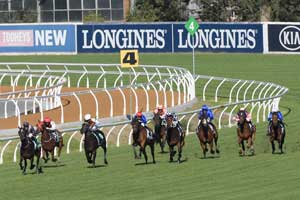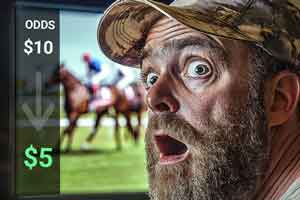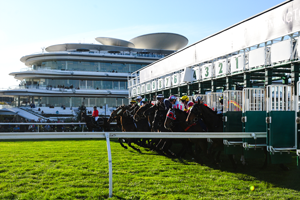
Horse Fitness - why punters need to know
- Jun 17, 2016 11:16 AM
It's one of the most important factors in racing but it's also the one that most punters know least about. Like gears in a car, fitness constrains the ability of even the best race horses, which makes it a vital factor for punters to consider when doing the form.

The lack of concern or familiarity on horse fitness amongst punters isn't surprising. Punters will usually evaluate factors that are easy to measure and readily available in form guides. There are very few if any direct indicators of a horse's fitness in a form guide which means most punters are working blind to this critical fact.
So if fitness is so important to the outcome of a race how do punters work it out?
Preparation Cycle
There is a basic cycle of fitness that thoroughbreds usually go through as they progress through their preparation. For most race horses there are three stages.
- Improvement,
- Peak Fitness and then
- Decline.
Knowing where each horse is within this cycle is one indicator of a runner's fitness level in a race.
The trend that indicates this cycle is not always easy to find. A good run in a horse's past runs is not always obvious from the runner's finishing position. Form guides providing comments on each horse's past run are useful here to form a view on their fitness level.
Bad form
While the preparation cycle is a useful guide it doesn't always ring true. Like any sporting competitor, horses have slumps which represent preparations where they don't reach peak fitness. Consistent under-performance or mixed form usually means that the horse's peak fitness levels should be discounted, at least for his current preparation.
Resuming
First runs back from a spell present one of the most challenging aspects when assessing a horse's fitness. Usually punters look at past first-up form to get a view but form guide statistics can sometimes be misleading in the absense of a comprehensive ratings analysis on each first-up run. A very smart punter explained an approach he used that tied the length of the time it took a horse to get to peak fitness with his class. The classier the horse the less runs it need to reach his peak. He kept it fairly simple:
- Very Classy - 1 to 2 runs
- Classy - 2 to 3 runs
- Average - 3 to 4
- Below average - 5 or more
I have found that it provides a useful rule-of-thumb when trying to assess where a horse's fitness level will be first one or two runs back from a spell.
Trial form
When it comes to assessing fitness levels, trial form can be misleading too. Many punters read a horse's recent trials as if they had run in an official race. Trial runs are usually over shorter distances than the horses are used to running and the pace is usually somewhat whre they can expect it to be on race day. While the run contributes to the horse's fitness, it is unlikely that it will have the same impact as an official race start.
Mounting yard
Many professional punters have requested racing authorities to publish a horse's actual weight before it runs with a view to better understanding how close the runner is to it's peak fitness weight. In the absence of this information punters are left to depend on mounting yard information. These days punters are spoilt with mounting yard previews for Melbourne races through Racing.com, Sydney races through Sky Racing and other city tracks that host major racing meets.
There are a few serious punters who I am aware of that select their top chances in a race and then use mounting yard analysis to determine their staking plans if price fluctuations allow them to.
Mike Steward.








